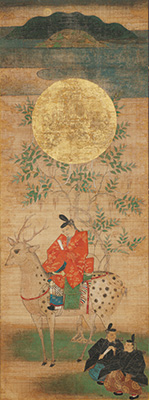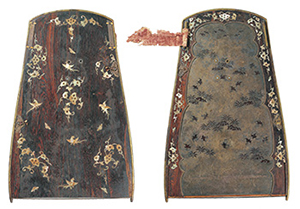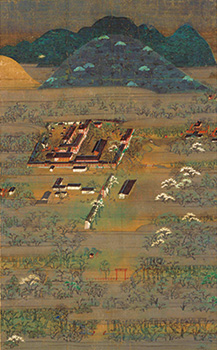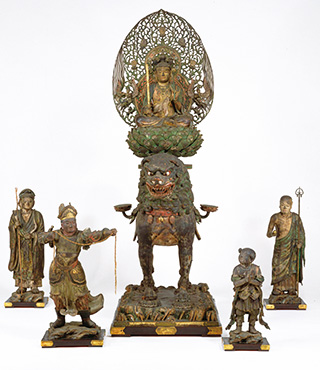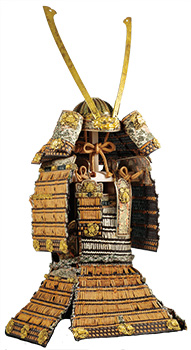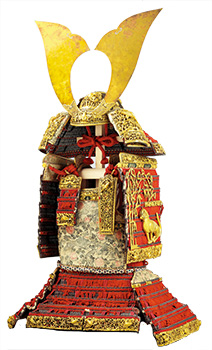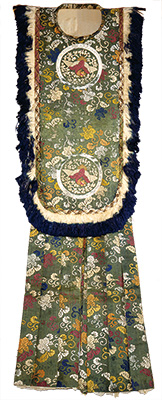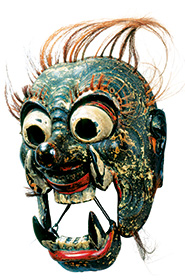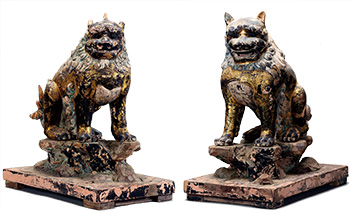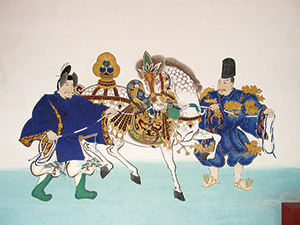"Adorable animals from Kasuga" Voting(voting period:February 1 - March 12, 2017)
Highlights of the Exhibition
Part 1 Primeval Forest of the Sacred Deer
According to Kasugataisha history, Takemikazuchi no Mikoto rode from Kashima on a deer and dismounted at the Kasugayama Primeval Forest.
This section introduces art related to the divine yet charming sacred deer along with historical documents that recount the beginnings of the Grand Shrine of Kasugataisha.
Deity Departing from Kashima Shrine
Nanbokucho to Muromachi period, 14th–15th century
Kasugataisha Shrine, Nara
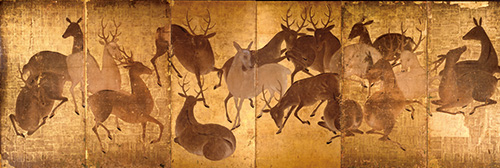
Deer
Edo period, 17th century
Kasugataisha Shrine, Nara
Page top
Part 2 A "Heian-era Shosoin Treasury"
At Kasugataisha, numerous divine treasures were dedicated on occasions such as imperial visits and ceremonies that are held every twenty years to repair or rebuild the main shrine buildings. Moreover, since Kasugataisha houses the tutelary deities of the Fujiwara clan, this family also made many sacred offerings.
As the only place where such divine treasures from the Heian period have been preserved to the present in their original form, the Kasugataisha collection is extolled as a “Heian-era Shosoin Treasury,”
making reference to the great repository of preceding Nara-period (710–794) treasures at the Buddhist temple Todaiji.
 Koto (zither)
Koto (zither)
From the Old Divine Treasures, Properties of the Principal Deity
Heian period, 12th century
National Treasure
Kasugataisha Shrine, Nara
[on exhibit from February 14 to March 12, 2017]
Flat Quiver
From the Old Divine Treasures, Properties of the Wakamiya Deity
Heian period, 12th century
National Treasure
Kasugataisha Shrine, Nara
[on exhibit from January 17 to February 12, 2017]
 Sword Mounting, Tachi (long sword)-style, With tweezer-shaped opening
Sword Mounting, Tachi (long sword)-style, With tweezer-shaped opening
Heian period, 12th century
National Treasure
Kasugataisha Shrine, Nara
[on exhibit from January 17 to February 19, 2017]
Page top
Part 3 The Aesthetic World of the Kasuga Cult
Kasugataisha attracted a following among the people and matured as the tutelary shrine of the Fujiwara clan. Emperors and members of the imperial family made many pilgrimages to Kasuga, starting with Emperor Ichijo in the first half of the Heian period.
The culmination of this cult of the Kasuga deity was realized in the Kasuga gongen genki-e (Illustrated Miracles of the Kasuga Deity), a set of twenty illustrated scrolls on silk that was produced at the request of Minister of the Left Saionji Kinhira in the latter half of the Kamakura period. It can be considered one of the ultimate achievements in the history of illustrated scroll painting in Japan.
In these ways, profound faith in the Kasuga deities gave rise to many aesthetic creations.
Kasuga Shrine Mandala
Kamakura period, 13th century
Tokyo National Museum
[on exhibit from January 17 to February 12, 2017]
Monju Bosatsu (Manjusri) Seated on a Lion, With Standing Attendants
By Koen
Kamakura period, dated 1273
Important Cultural Property
Tokyo National Museum
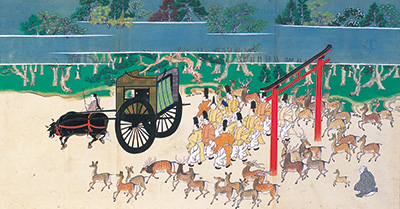
Kasuga gongen genki-e (Illustrated Miracles of the Kasuga Deity), Kasuga version, Scroll 12
Edo period, dated 1807
Kasugataisha Shrine, Nara
Scenes will be changed regularly.
Page top
Part 4 Offerings of Arms and Armor
It is often the case that swords, helmets, and armor that have been presented as shrine offerings are preserved with many of their original components intact, allowing us to deepen our understanding of them and their historical placement and significance.
Difficulties of historical placement can also be attributed to the exceptional state of preservation these objects have enjoyed as a result of the enduring faith of the people and the long history of the shrines. The arms and armor of Kasugataisha are exemplary sacred treasures that vividly chronicle that history.
Oyoroi-type Armor with Red Lacing Ornaments of plum and bush warbler
Kamakura period, 13th century
National Treasure
Kasugataisha Shrine, Nara
[on exhibit from January 17 to February 19, 2017]
Oyoroi-type Armor with Red Lacing Ornaments of bamboo, tigers, and sparrows
Kamakura to Nanbokucho period, 13th–14th century
National Treasure
Kasugataisha Shrine, Nara
[on exhibit from February 14 to March 12, 2017]
Sword Mounting, Tachi (long sword)-style, Hyogogusari-type Wood sorrel crests on ikakeji sprinkled gold ground
Kamakura period, 13th century
National Treasure
Kasugataisha Shrine, Nara
[on exhibit from February 14 to March 12, 2017]
Page top
Part 5 Performances Dedicated to the Gods
Among the religious festivals conducted at Kasugataisha, the most well-known and popularly familiar is the Kasuga Wakamiya Onmatsuri festival, held every year on December 17th.
This part introduce works such as Bugaku and Noh dedicated to the gods.
Left: Costume for Nasori
Edo period, 17th century
Kasugataisha Shrine, Nara
[on exhibit from January 17 to February 12, 2017]
Right: Bugaku Mask Nasori
Heian period, 12th century
Important Cultural Property
Kasugataisha Shrine, Nara
Page top
Part 6 Shikinen Zotai: Periodic Restorations of the Kasugataisha Shrine
At Kasugataisha, repair or reconstruction of the main shrine sanctuary is carried out approximately every twenty years in a ceremony known as shikinen zotai.
In this final section of the exhibition, we look back at the history of the periodic reconstructions and repairs of the Kasuga Grand Shrine through the various records related to these projects, and at the same time present various articles that originally adorned the main sanctuary and were later retired from use in conjunction with the shikinen zotai renewals.
Shishi Lion and Koma-inu Dog Guardians (First shrine)
Kamakura period, 13th century
Kasugataisha Shrine, Nara
Dividing Walls
Dated 1975
Kasugataisha Shrine, Nara
Page top


